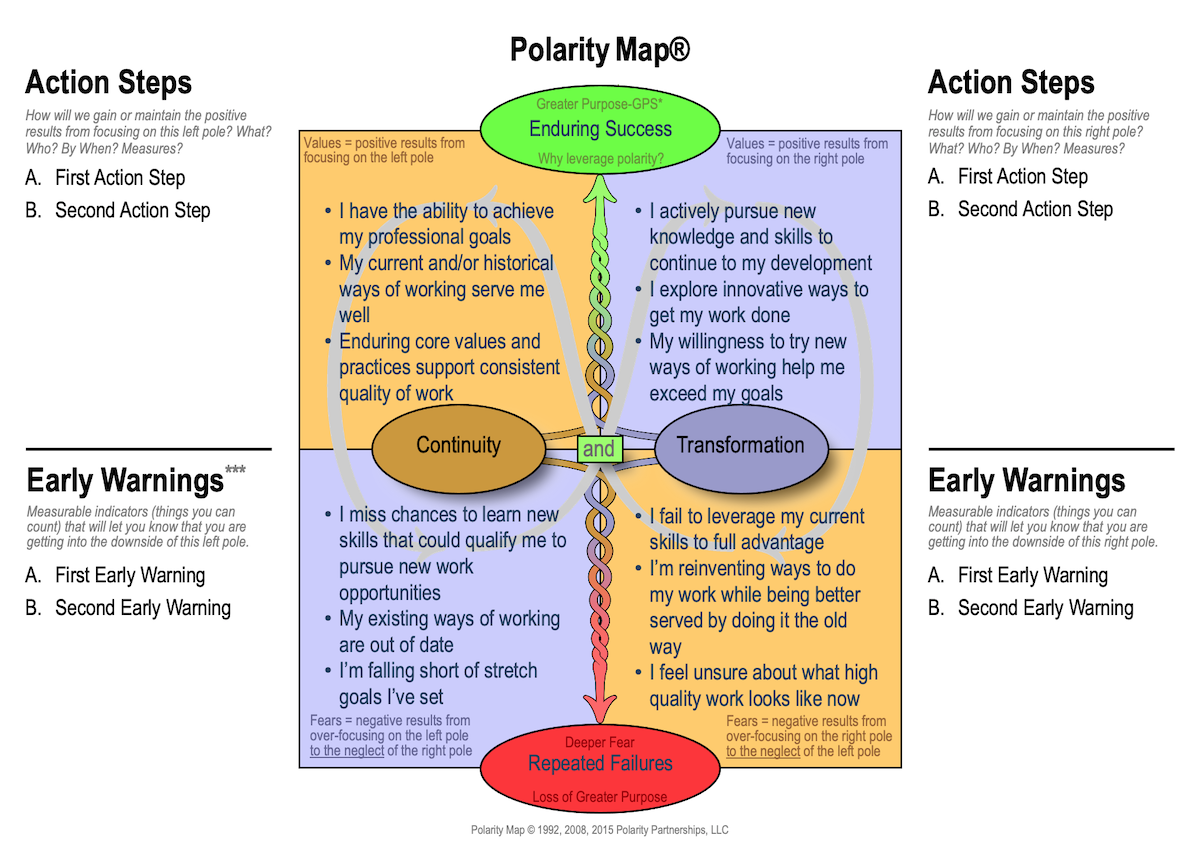To the detriment of talent development and work cultures everywhere, we most often employ “either/or” thinking. Let’s talk about why today’s leaders should more often choose “and” thinking….
So many important aspects of human capital are nuanced and interrelated, yet seemingly polar opposites. For instance, recognizing the individual performer or recognizing team efforts. Showing respect for each person or showing respect based on performance and rewarding managerial-style performance or rewarding leaders.
Some organizations state only half of these pairs as desired values, hence the “or” between them. This is a mistake because when we see these values framed as either/or choices, we miss the synergy from leveraging the best from both sides. We cause harm from overfocusing on one value to the neglect of the other. After all, many values are interdependent, and ideas we think might be opposites are both highly desirable. The misleading part about this is that they need to live in tension with one another over time. These pairings can be called paradoxes, wicked problems, or polarities that require “and thinking.”
“And” Thinking Versus “Or” Thinking
Both inside and outside of work, complexities exist that require us to think about these tensions between seemingly opposing pairs, rather than choosing A over B. For instance, one critical thinking point for leaders is the push-pull between continuity and transformation.
Those business leaders often find themselves executing complex change initiatives that enable their companies to compete better. At the same time, they must create and maintain consistent foundational cultures employees can lean into – no matter what. All too often, when the message is only why complex changes are necessary, without acknowledging what has been going well (and what needs to remain in place), even the best plans blow up.
Everything done “the old way” is now wrong. Right?
This pervasive contradiction lowers morale and confuses, thereby sabotaging the energy and focus needed to implement the change.
Centralized Versus Decentralized Coordination
One of the biggest derailers for employees is the pendulum swing between centralized coordination and decentralized coordination. Organizations are frequently in a seesaw around this polarity. It’s as if one is better than the other, so they over-focus on one at the expense of the other.
For instance, a new chief executive officer is instituted and says: “We’ve lost the entrepreneurial nature of this organization, and we must decentralize and give control to each of the business units.” Because centralization and decentralization are interrelated, people complain there is no coordination and little ability to share services effectively. That causes the next CEO to say: “We have to centralize; everything is all over the map. Nobody knows who’s on first.” After finally getting used to the new structure, it whipsaws back to some version of the old one. With the average tenure of CEOs being three-and-a-half years, organizations must simultaneously focus on centralization and decentralization.
The Solution: Mapping Versus Gapping
One way around this conundrum is to institute a mapping process…

Instead of executing a gap analysis, which is how most people approach change, we think about the upside and downside of their preferred value or pole in the polarity equation. We then do the same for the countervailing pole. Then, as the diagram illustrates, we outline action steps for gaining the upsides from each pole. We also design strategies for avoiding the downsides of each if we over-focus on one pole to neglect the other.
That is “and” thinking.
Once we get the tension right between the different energetic poles, my clients find themselves comfortably resting in a virtuous cycle. They begin to get the best of both options, no matter how opposite those options seem. For many leaders, this comes as such a relief. Because those leaders, rather than focusing on the power of both – the “and” – tend to over-focus on one side of the equation. They then find themselves in a vicious and contentious cycle that isn’t good for them, their fellow leaders, or their teams.
Harness the power of both poles. Expand your thinking to “and.” You’ll soon create a virtuous cycle that will enable your organization to thrive, freeing your teams to unify under healthy “and” tensions versus the opposing camps that can form from “or” decisions.
Post Views: 1,018